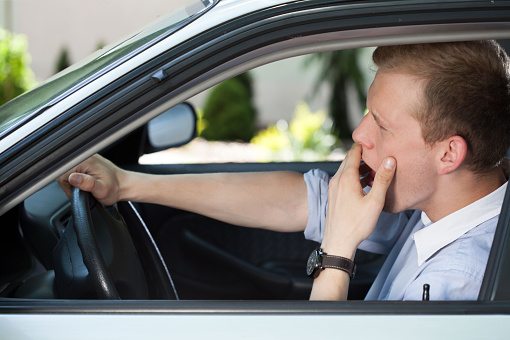Drowsy driving car accidents more likely to spike after daylight saving time
 Drowsy driving doesn’t always involve falling asleep at the wheel. It is a form of driver impairment just like drunk driving. The difference is that drunk driving is illegal, but unless a drowsy driver causes a crash, police can’t just take a driver off the road for simply appearing tired. In addition, drowsy driving is very difficult to track and often leaves behind no physical evidence after a crash.
Drowsy driving doesn’t always involve falling asleep at the wheel. It is a form of driver impairment just like drunk driving. The difference is that drunk driving is illegal, but unless a drowsy driver causes a crash, police can’t just take a driver off the road for simply appearing tired. In addition, drowsy driving is very difficult to track and often leaves behind no physical evidence after a crash.
As more people juggle tight schedules and get less than the recommended amount of sleep (7-9 hours per night), drowsy driving has become a growing problem in Buffalo and across the United States.
The National Highway Traffic Safety Administration estimates that drowsy driving is a factor in about 91,000 crashes each year — resulting in nearly 800 deaths and 50,000 injuries. In 2014, New York State saw a total of 4,520 drowsy driver crashes, with 25 fatalities and 2,175 injuries.
Drowsy driving warning signs
According to the National Sleep Foundation, there are several warning signs that indicate when a drowsy driver should get off the road. These include:
- Poor focus
- Frequent blinking
- Trouble keeping eyes open
- Wandering thoughts and daydreaming
- Poor memory of last few miles driven
- Frequent yawning and rubbing eyes
- Difficulty keeping head up
- Drifting out of a lane or tailgating
- Restlessness and irritability
Drivers who begin to notice these symptoms should pull over somewhere safe, turn off their car and take a short nap. Other ways to mitigate drowsy driving include:
- Consuming caffeine
- Opening a car window
- Getting out and walking around
- Have a passenger who is able to drive take the wheel
How daylight saving time may contribute to drowsy driving car accidents
Daylight saving time is just around the corner. On Sunday, November 3, Buffalo-area residents will “gain” an hour of sleep, but it could take up to a week to adjust. That one hour affects our circadian rhythm, our body’s internal clock that programs when we sleep and when we’re active.
A University of Washington Medicine video explains the effects of daylight savings and how it can lead to drowsiness. Turning back the clock is similar to experiencing jet lag, which happens when someone travels across different time zones. In order to minimize the impact of daylight saving time, the video suggests going to bed an hour earlier.
In addition to the time change, it will get darker earlier after daylight saving time. The reduced daylight can also impact our circadian rhythm by releasing the sleep hormone melatonin. That means, in the days following daylight saving time, crashes will likely increase.
That’s why if you were hurt in a crash, or lost a loved one, it’s important that you take legal action as soon as possible. An experienced Buffalo car accident attorney at the Law Offices of James Morris advocates for injured motorists who were involved in drowsy driving crashes. Our legal team knows how to uncover the evidence need to help you build a solid claim and get results.
To find out how we can help you, contact us online today.




